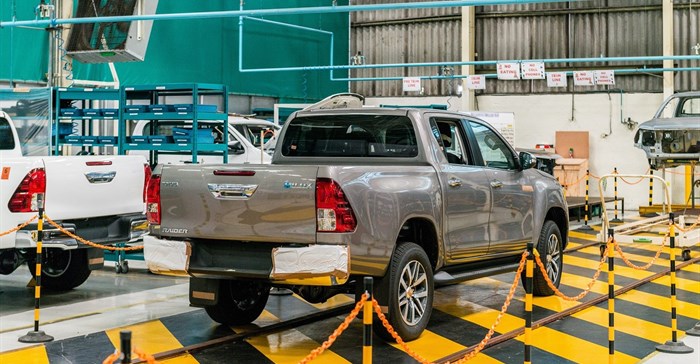Japanese automaker Toyota has announced that it has invested over R6,1bn to facilitate production of the all-new Hilux and Fortuner at its Prospecton plant in Durban.
Toyota South Africa Motors (TSAM) manufactures no fewer than five individual models (Hilux, Fortuner, Corolla, Corolla Quest and Quantum) in CKD or complete-knock-down form, as well as selected Hino and Dyna models produced as SKD or semi-knocked-down assemblies.
Investment breakdown
This latest announcement represents the biggest single investment Toyota has made to date. Unpacking the R6,1bn investment - R1,9bn relates to supplier tooling, R1,4bn to in-house tooling and the remaining amount to investment in in-house facilities and buildings to cater for the new press machines.
Toyota's component plants (sited across the road from the main plants) also had to undergo some major 'facilitisation' with the ladder frame or chassis plant being completely reworked for the newly designed chassis which is a unique selling point of the new models. It was also an opportune time to introduce new global equipment which provide improved accuracy, quality and process stability, while at the same time increasing the automation levels at this facility.
New facilities were installed for the manufacture of a variety of other in-house components including the new instrument panel, exhaust assembly, brake and clutch assembly, rear bumper reinforcement, catalytic converter, rear and front axle assemblies as well as the painted resin front bumpers. It's worth noting that the previous Hilux and Fortuner models had in the region of 1,500 local parts and for the new models, this number has swelled to 2,700.
This has had a direct knock-on benefit for production capacity at the Prospecton plant which has now increased from 120,000 p.a. to 140,000 p.a. Hilux and Fortuner are core vehicles for Toyota locally from both a brand and production perspective, and hence contribute a sizeable 80% of total production volume. Sales volumes for Hilux are estimated to be in the region of 3,400 per month with Fortuner forecast to achieve an average of 1,100 retail units per month.
On the export front, these two models are just as important. TSAM is the second biggest global manufacturer of Hilux and Fortuner (behind Toyota Motors Thailand) and the only facility charged with building Hilux models that meet the new Euro 6 regulatory demands. Exports are forecast to be slightly more than 50% of TSAM's total 2016 Hilux and Fortuner production. This year TSAM will export more than 55,000 brand new Hilux and Fortuners to 74 countries across Africa (43), Europe (28) and Latin America (3). In addition to producing and supplying fully built-up light commercial and passenger vehicles (CBUs) to the globe, TSAM will also be exporting new components to Thailand for the use in their own Hilux/Fortuner/Innova production facilities.
Production line stability
Dr Johan van Zyl, chairman of Toyota South Africa and chief managing officer of Toyota Motors Europe commented on the importance of stability on the production line: "Although we are justifiably proud of the achievements of the motor industry in growing production and especially exports post-1994, we must remember that South Africa currently produces less than 1% of the 90-million vehicles made worldwide each year.
"We have to remain world competitive not only in terms of wages and productivity, but also regarding labour stability. I cannot stress enough the importance of engagement - engage, engage and engage again - the need to employ dispute resolution as the first and ultimately only line of defense rather than resorting to strike action as the solution."









































